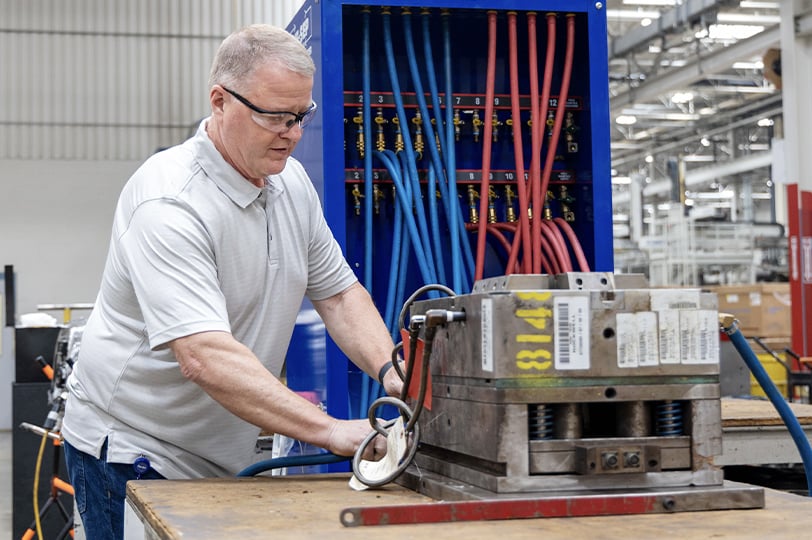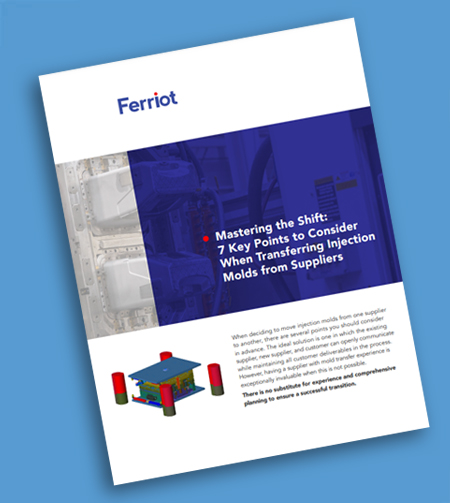During the last few years, the plastics processing industry has seen resin lead time and availability become extremely volatile, adding more risk to the supply chain. Thermoplastic resin availability could change in an instant due to unexpected plant slowdowns and downtime. The global pandemic kept people from working and limited plant capacities. Mother nature caused ice storms that damaged manufacturing plants and power grids. These circumstances and a global slowdown also limited production of resin feedstocks, making it more difficult than ever to meet the existing high market demands.
With decreased capacity and limited raw materials, resin manufacturers had to make decisions regarding which resins they would produce, and which customers and industries were most important to their bottom lines. Their decisions had economic impact on various markets around the globe as resin suppliers prioritized business and lead times lengthened. Smaller quantity buyers took a back seat and had to wait longer or find other sources of supply. Smaller volume specialty resins were lower in priority and received even longer lead times or were discontinued altogether. It was a perfect storm.
Market changes like this make it clear that steps need to be taken to mitigate supply chain risk for manufacturers. Securing raw materials can be a critical step to keeping manufacturing plants running. By coordinating with supply partners, OEMs and their injection molder partners can not only mitigate raw material supply risks, but they can also improve lead times for parts.
How Plastic Resin Inventory Supply Agreements Work and Why They Matter for Manufacturers
The risk of raw material shortages can be mitigated by implementing an inventory supply agreement between the OEM and your injection molder partner. For example, the agreement may authorize the contract molder to order resin and other components in advance. Resin order volume and timing would be based upon the OEM’s forecast. These raw materials will be kept in stock and thus readily available when the OEM needs parts produced.
Resin lead times have varied recently, from two weeks to 5 or 6 months for specialty items. If your contract molder has the needed raw materials on hand, outside impact is minimized, and the injection molder can better control production lead times. These agreements will usually include protections for the contract molder and will specify that if resin or component parts are not used for production within a certain period of time, the OEM would be responsible for making the contract molder whole by paying for the excess material on hand. This protects the molder from carrying all the cost and shares responsibility between the two parties. This also means that accurate forecasting is particularly important and good communication is required if the forecast changes.
Strategies for Successful Implementation of Plastic Resin Inventory Agreements in Your Supply Chain
The same idea works for purchased components that the contract molder will buy and use when providing assembly services as well. Components from overseas have also seen extended lead times due to pandemic plant shutdowns, staffing shortages and longer transit times when port congestion was at its height. These items could be inserts, magnets, wire harnesses, etc.
Anything with a long lead time will benefit from a supply agreement. Ideally, when the customer places their order, all materials are in stock, and the order only needs to be added to the manufacturing schedule.
A custom molder is more likely to be agreeable to stocking raw materials as they typically take up less space than a finished part. Additionally, if raw material is no longer needed, it is possible to sell the resin elsewhere to recoup cost. Stocking of finished parts can also be more difficult if customer order frequency, cadence and quantities are inconsistent. One can consider stocking finished parts or implementing vendor managed inventory as options, but raw material agreements are more easily managed with good forecasting and communication between business partners.
If you’re wondering when the plastic resin shortage will end, sources say it could take until 2025 for supply to meet demand. However, here at Ferriot we tackle supply chain challenges head on. With investments in spare parts and increased resin stock, we ensure timely project completion no matter what’s going on in the world. Contact us now for your injection molding needs.



